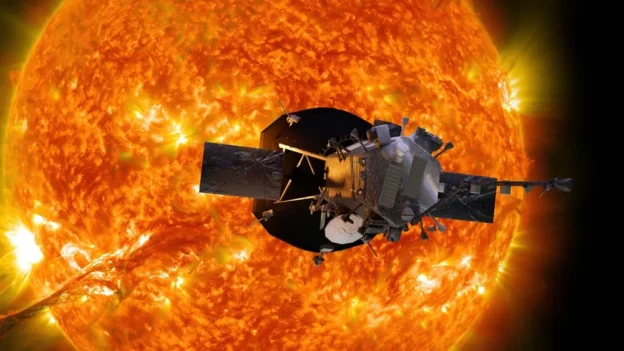Parker, NASA’s solar probe is en route at a speed of 195 km per second with the goal of “landing” on the Sun on December 24 of this year. Since its launch on August 12, 2018, the probe has traveled through the solar system to reach its final destination.
Once it achieves this space milestone, NASA scientists will study and monitor the star’s behavior to obtain measurements and images that will provide a deeper understanding of the Sun.
This achievement will allow us to understand the origin of the solar wind, make crucial contributions to predicting changes in the space environment that affect life on Earth, understand the origin of solar storms, and obtain a clearer view of the Sun’s influence on the space environment. . It is relevant to note that Parker will approach a distance of six million km from the sun, facing extreme temperatures of approximately 1,400 ºC.
About Parker: NASA’s Solar Probe
Parker is a NASA space solar probe whose objective is to study and closely monitor the behavior of the Sun and its outer corona. In addition, the probe is responsible for collecting measurements and images in order to expand scientific knowledge about the origin and evolution of the solar wind. To achieve these goals, the probe is equipped with four sets of instruments: a field experiment, a comprehensive solar scientific investigation, a wide-field imager, and the detection of alpha electrons and protons from the solar wind. These instruments are designed to analyze magnetic fields, plasma and energetic particles.
“To conduct its unprecedented research, the Parker Solar Probe and its instruments are protected from the Sun by a 4.5-inch-thick carbon composite shield that can withstand temperatures reaching nearly 2,500 degrees Fahrenheit (1,377 Celsius).“, explains NASA on its official blog. Therefore, it “survives” the harsh conditions of the Sun because cutting-edge thermal engineering advances protect the spacecraft during its dangerous journey.
Interestingly, the mission is named after the late Dr. Eugene N. Parker, who played a pivotal role in advancing our modern understanding of the Sun.
In the 1950s, while a professor at the University of Chicago, Parker developed a mathematical theory that anticipated the existence of the solar wind, the constant flow of solar material from the Sun. Throughout his distinguished career, Parker repeatedly transformed the field by presenting ideas that addressed fundamental questions about the functioning of our Sun and stars throughout the universe.
Don’t miss any of our posts and follow us on social media!
Inspenet.com YouTube LinkedIn Facebook Instagram
Source: 20minutos.es

